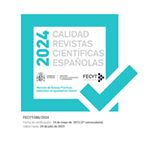Souls redeemers before the Royal Treasury.
An economic and juridical analysis of Mercedarian redemptions in the long duration (1575 – 1723).
Abstract
The article aims to contribute to the dynamic debate on slavery and the economy of captive rescue in Early-Modern Mediterranean: it analyses the redemptive activity carried out by the friars of the Order of Our Lady of Mercy, their work of captive rescue and the financing and development of redemption missions over the long period (approximately one century and a half). This essay focuses in particular on the study of four redemption missions (1575, 1612, 1678 and 1723) through the analysis of the respective books of accounts, where a Royal notary recorded every movement of money, both income and expenses, in order to make the activity traceable and to keep under control the accounting of the rescue missions in charge of the friars. The article shows that it was the Hispanic Monarchy itself that decided which captives must be rescued with priority, and how much money to spend on it, which of course severely limited religious redeemers’ independence, as well as their freedom of action.
Downloads
Article download
License
In order to support the global exchange of knowledge, the journal Cuadernos de Historia Moderna is allowing unrestricted access to its content as from its publication in this electronic edition, and as such it is an open-access journal. The originals published in this journal are the property of the Complutense University of Madrid and any reproduction thereof in full or in part must cite the source. All content is distributed under a Creative Commons Attribution 4.0 use and distribution licence (CC BY 4.0). This circumstance must be expressly stated in these terms where necessary. You can view the summary and the complete legal text of the licence.












